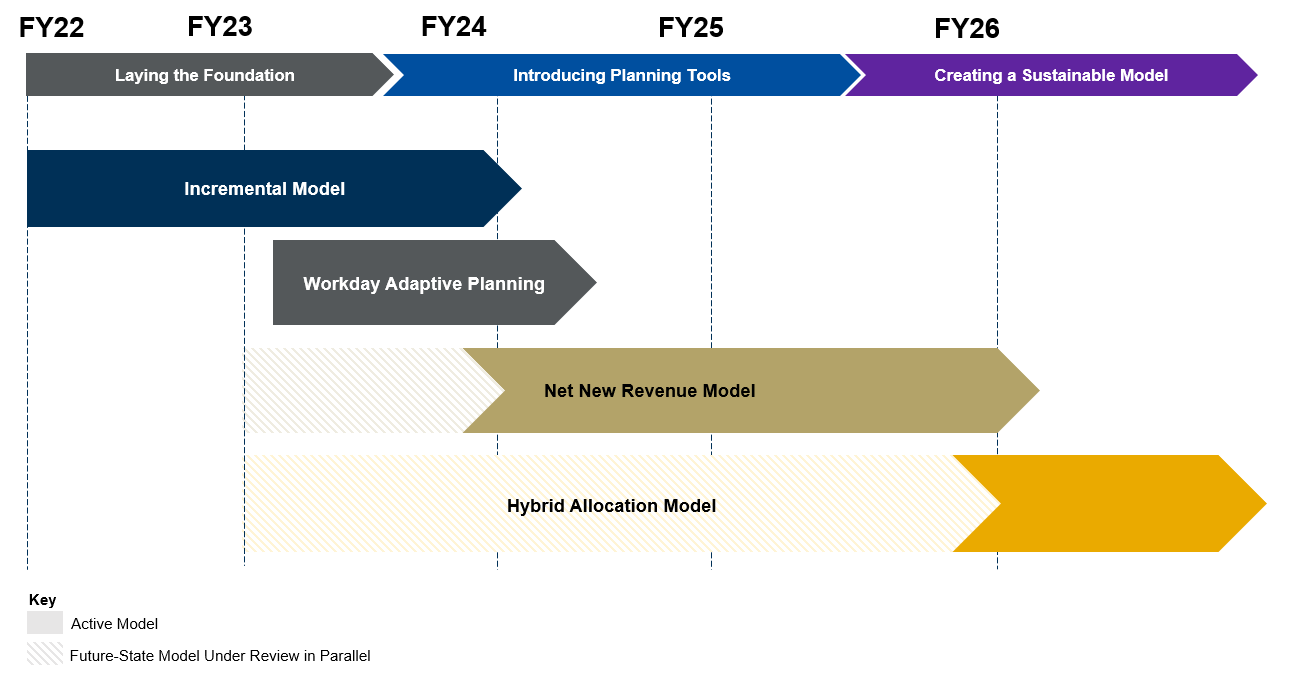The Future of Budgeting
Georgia Tech’s Budget Reform Initiative
Georgia Tech’s 10-year Institute Strategic Plan promotes growth across the Institute. A new budget model is needed that can reward innovation, contain costs, and generate revenue in alignment with strategic goals and priorities.
What Is Budget Reform?
Why Are We Reforming the Budget?
Who Will Budget Reform Impact?
When Will Budget Reform Take Effect?
The budget reform project will update our budgeting process from its current incremental budget model to a Hybrid Allocation Model. The project will take place over three phases:
- Phase 1 – Diagnostic / Current State Assessment
- Phase 2 – Solution Design / Reformed Budget Model + Implementation Roadmap
- Phase 3 – Implementation / Training
In alignment with the Institute Strategic Plan, the budget reform effort will implement a new budget model to reward innovation, promote generation of revenue, and encourage cost containment. New planning and forecasting processes will be supported by Workday Adaptive Planning.
Budget reform impacts each college as well as non-college units.
Budget reform will be implemented over the course of five years, beginning with the current state diagnostic that will gradually transition the university from the current incremental budget model to the new Hybrid Allocation Model.
Our Roadmap
The Hybrid Allocation Model, which represents the Institute’s end state of budgeting, will be implemented in FY26. The Budget Reform project is guided by a comprehensive five-year roadmap designed to provide leadership with sufficient time to refine and adjust the model, facilitating a smooth transition from Georgia Tech’s traditional incremental budgeting approach to the new model.
During the budget years FY24 and FY25, a parallel process was established. During this period, the Net New Revenue model allocated all General Operations (new state appropriations, tuition revenues, other revenues, and ICR) based on a funding formula. While the legacy model continued to handle resource allocations, the Hybrid Allocation Model was utilized concurrently for analytical purposes. Feedback from internal stakeholders was actively gathered and assessed, leading governance committees to propose enhancements during this timeframe. Additionally, budget processes were digitized and revamped such as the New Expense Request Form (NERF) process and reporting tools such as Workday Adaptive Planning were introduced to improve financial management.
This phased approach is designed to ensure a seamless transition, allowing for essential adjustments and training before the Hybrid Allocation Model is fully employed in FY26.

Our Principles
The following guiding principles set the direction for the Budget Reform effort and serve as the project’s north star throughout solution design, implementation, and in support of the budget model well beyond go-live.
Need more information?
Questions? Comments? Feedback?
Send us a message.
